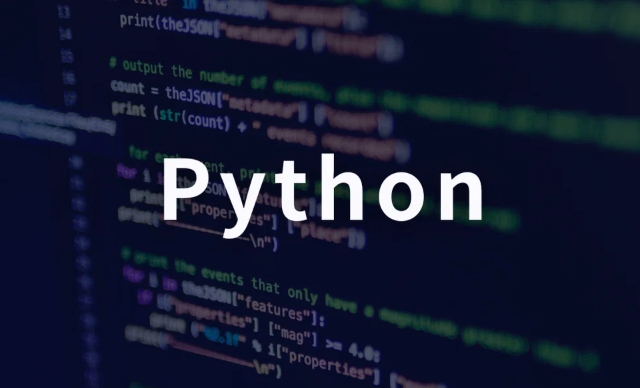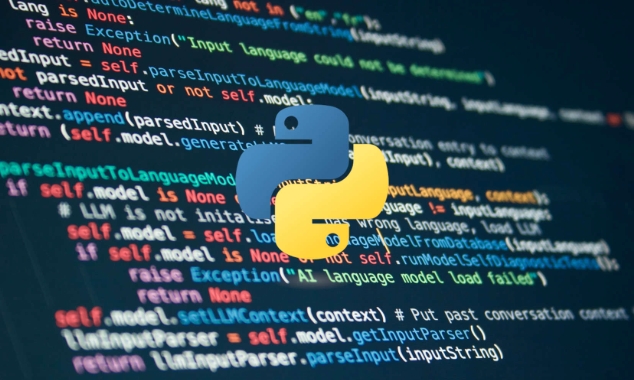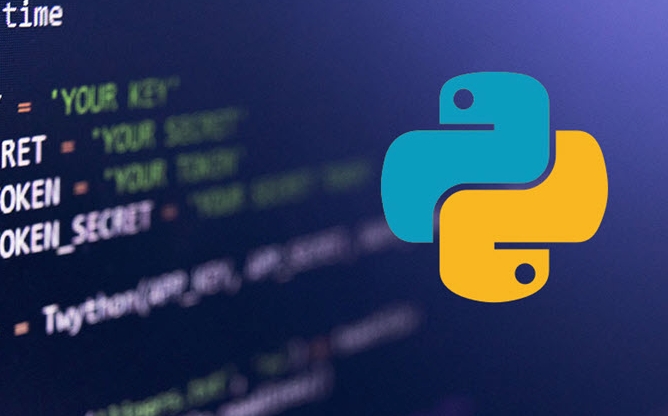Functions are used in Python to organize reusable code to perform specific tasks. By defining functions using the def keyword, such as def greet(): print("Hello, world!"), you can call it multiple times without repeatedly writing the same code. Parameters enable the function to receive input, and the return statement returns the output result, thereby improving flexibility. Python built-in functions such as print() can be used directly, but custom functions are suitable for specific needs, helping to decompose complex tasks and improve code maintainability. Functions should be used when code recurs, program size is large, or partial logic needs to be tested separately, which not only reduces redundancy, but also enhances code readability and collaboration efficiency.

A function in Python is a block of reusable code designed to perform a specific task. Instead of writing the same code over and over, you define a function once and call it whenever you need that task done. Functions help organize your code, make it cleaner, and improve readability.

How to Define a Function
To create a function in Python, you use the def keyword followed by the function name and parentshes. You can also include parameters inside those parentshes if the function needs input values.
Here's a basic example:

def greet():
print("Hello, world!") This defines a function called greet() that prints a message when called. To run it, just use:
greet()
Some key points:

- The first line ends with a colon
: - The indented block that follows is the function's body
- Indentation matters — everything at the same level under the
defline belongs to the function
Why Use Parameters and Return Values?
Functions become more powerful when they accept inputs (parameters) and give back outputs (return values). This makes them flexible and able to handle different data each time they're called.
For example:
def add(a, b):
return abNow you can call this function with different numbers:
result = add(3, 5) print(result) # Output: 8
Why this matters:
- Parameters let you pass values ??into the function
-
returnsends a result back after processing - You can store or use that result elsewhere in your code
You don't have to return just one thing — you can return multiple values ??as a tuple.
Built-in vs Custom Functions
Python comes with many built-in functions like print() , len() , and range() . These are always available without needing extra setup.
But when you want to do something specific that isn't covered by built-in tools, you write your own function. That's where defining your own logic really shines.
Examples:
- Built-in:
print("Hello") - Custom:
def says_hello(name): print(f"Hello, {name}!")Custom functions let you:
- Break complex tasks into smaller parts
- Reuse code across different programs
- Improve maintainability by keeping related logic together
When Should You Use Functions?
Use functions when:
- You find yourself repeating the same block of code
- You want to split a big program into manageable pieces
- You need to test or debug part of your code separately
They're especially useful for things like:
- Performing calculations
- Handling user input/output
- Processing data structures
It's not just about avoiding repetition — it's about making your code easier to read, update, and share.
Basically that's it.
The above is the detailed content of What is a function in Python. For more information, please follow other related articles on the PHP Chinese website!

Hot AI Tools

Undress AI Tool
Undress images for free

Undresser.AI Undress
AI-powered app for creating realistic nude photos

AI Clothes Remover
Online AI tool for removing clothes from photos.

Clothoff.io
AI clothes remover

Video Face Swap
Swap faces in any video effortlessly with our completely free AI face swap tool!

Hot Article

Hot Tools

Notepad++7.3.1
Easy-to-use and free code editor

SublimeText3 Chinese version
Chinese version, very easy to use

Zend Studio 13.0.1
Powerful PHP integrated development environment

Dreamweaver CS6
Visual web development tools

SublimeText3 Mac version
God-level code editing software (SublimeText3)
 How to use PHP combined with AI to achieve text error correction PHP syntax detection and optimization
Jul 25, 2025 pm 08:57 PM
How to use PHP combined with AI to achieve text error correction PHP syntax detection and optimization
Jul 25, 2025 pm 08:57 PM
To realize text error correction and syntax optimization with AI, you need to follow the following steps: 1. Select a suitable AI model or API, such as Baidu, Tencent API or open source NLP library; 2. Call the API through PHP's curl or Guzzle and process the return results; 3. Display error correction information in the application and allow users to choose whether to adopt it; 4. Use php-l and PHP_CodeSniffer for syntax detection and code optimization; 5. Continuously collect feedback and update the model or rules to improve the effect. When choosing AIAPI, focus on evaluating accuracy, response speed, price and support for PHP. Code optimization should follow PSR specifications, use cache reasonably, avoid circular queries, review code regularly, and use X
 python seaborn jointplot example
Jul 26, 2025 am 08:11 AM
python seaborn jointplot example
Jul 26, 2025 am 08:11 AM
Use Seaborn's jointplot to quickly visualize the relationship and distribution between two variables; 2. The basic scatter plot is implemented by sns.jointplot(data=tips,x="total_bill",y="tip",kind="scatter"), the center is a scatter plot, and the histogram is displayed on the upper and lower and right sides; 3. Add regression lines and density information to a kind="reg", and combine marginal_kws to set the edge plot style; 4. When the data volume is large, it is recommended to use "hex"
 python list to string conversion example
Jul 26, 2025 am 08:00 AM
python list to string conversion example
Jul 26, 2025 am 08:00 AM
String lists can be merged with join() method, such as ''.join(words) to get "HelloworldfromPython"; 2. Number lists must be converted to strings with map(str, numbers) or [str(x)forxinnumbers] before joining; 3. Any type list can be directly converted to strings with brackets and quotes, suitable for debugging; 4. Custom formats can be implemented by generator expressions combined with join(), such as '|'.join(f"[{item}]"foriteminitems) output"[a]|[
 python connect to sql server pyodbc example
Jul 30, 2025 am 02:53 AM
python connect to sql server pyodbc example
Jul 30, 2025 am 02:53 AM
Install pyodbc: Use the pipinstallpyodbc command to install the library; 2. Connect SQLServer: Use the connection string containing DRIVER, SERVER, DATABASE, UID/PWD or Trusted_Connection through the pyodbc.connect() method, and support SQL authentication or Windows authentication respectively; 3. Check the installed driver: Run pyodbc.drivers() and filter the driver name containing 'SQLServer' to ensure that the correct driver name is used such as 'ODBCDriver17 for SQLServer'; 4. Key parameters of the connection string
 C function example
Jul 27, 2025 am 01:21 AM
C function example
Jul 27, 2025 am 01:21 AM
Functions are the basic unit of organizing code in C, used to realize code reuse and modularization; 1. Functions are created through declarations and definitions, such as intadd(inta,intb) returns the sum of the two numbers; 2. Pass parameters when calling the function, and return the result of the corresponding type after the function is executed; 3. The function without return value uses void as the return type, such as voidgreet(stringname) for outputting greeting information; 4. Using functions can improve code readability, avoid duplication and facilitate maintenance, which is the basic concept of C programming.
 python pandas melt example
Jul 27, 2025 am 02:48 AM
python pandas melt example
Jul 27, 2025 am 02:48 AM
pandas.melt() is used to convert wide format data into long format. The answer is to define new column names by specifying id_vars retain the identification column, value_vars select the column to be melted, var_name and value_name, 1.id_vars='Name' means that the Name column remains unchanged, 2.value_vars=['Math','English','Science'] specifies the column to be melted, 3.var_name='Subject' sets the new column name of the original column name, 4.value_name='Score' sets the new column name of the original value, and finally generates three columns including Name, Subject and Score.
 Optimizing Python for Memory-Bound Operations
Jul 28, 2025 am 03:22 AM
Optimizing Python for Memory-Bound Operations
Jul 28, 2025 am 03:22 AM
Pythoncanbeoptimizedformemory-boundoperationsbyreducingoverheadthroughgenerators,efficientdatastructures,andmanagingobjectlifetimes.First,usegeneratorsinsteadofliststoprocesslargedatasetsoneitematatime,avoidingloadingeverythingintomemory.Second,choos
 python django forms example
Jul 27, 2025 am 02:50 AM
python django forms example
Jul 27, 2025 am 02:50 AM
First, define a ContactForm form containing name, mailbox and message fields; 2. In the view, the form submission is processed by judging the POST request, and after verification is passed, cleaned_data is obtained and the response is returned, otherwise the empty form will be rendered; 3. In the template, use {{form.as_p}} to render the field and add {%csrf_token%} to prevent CSRF attacks; 4. Configure URL routing to point /contact/ to the contact_view view; use ModelForm to directly associate the model to achieve data storage. DjangoForms implements integrated processing of data verification, HTML rendering and error prompts, which is suitable for rapid development of safe form functions.






